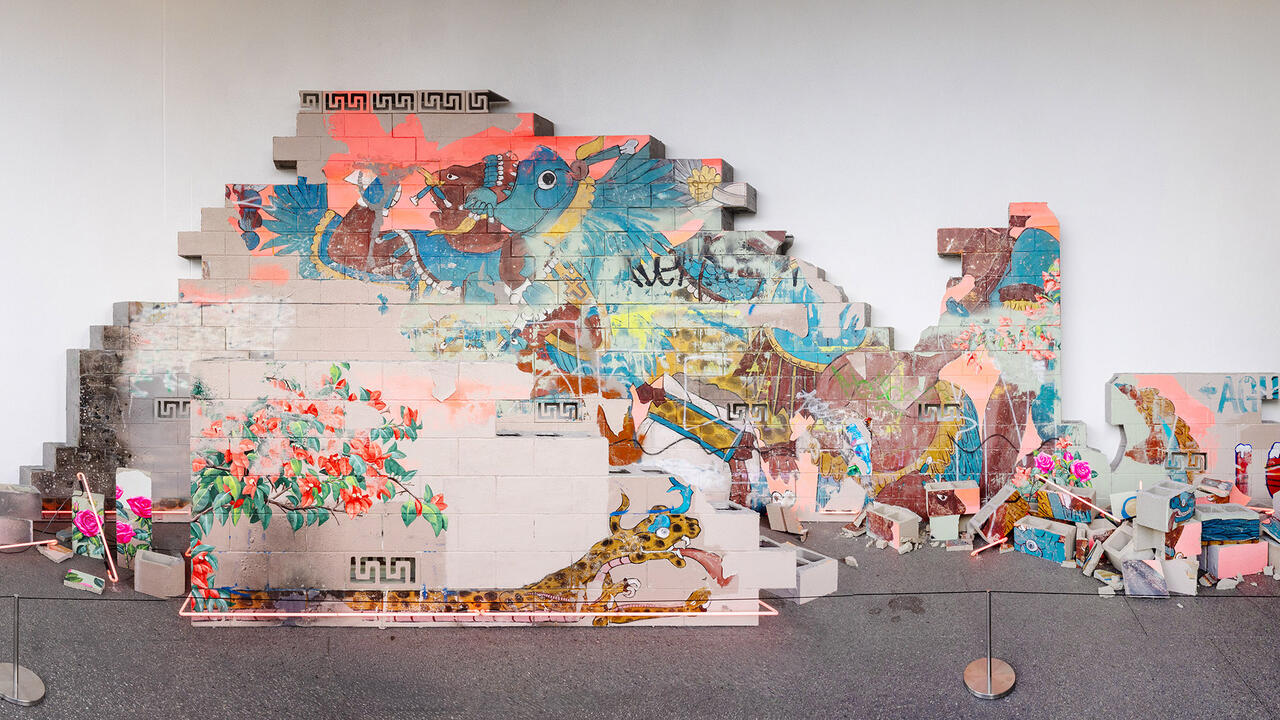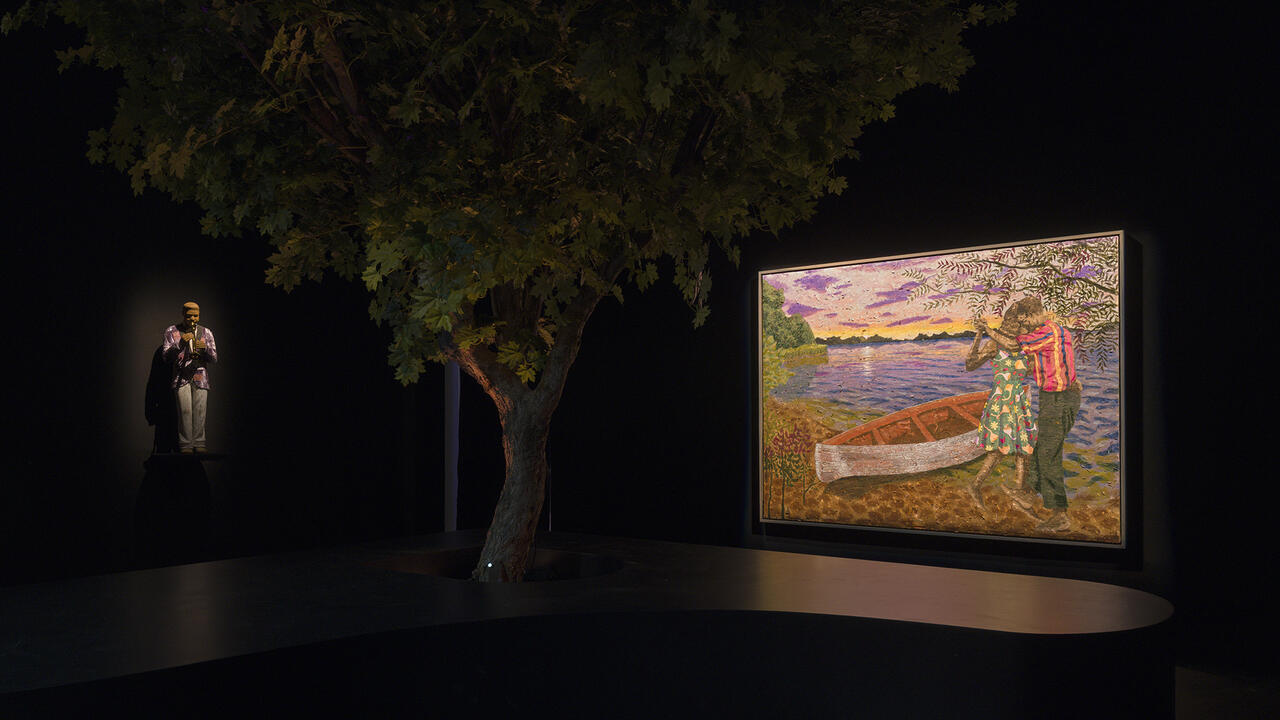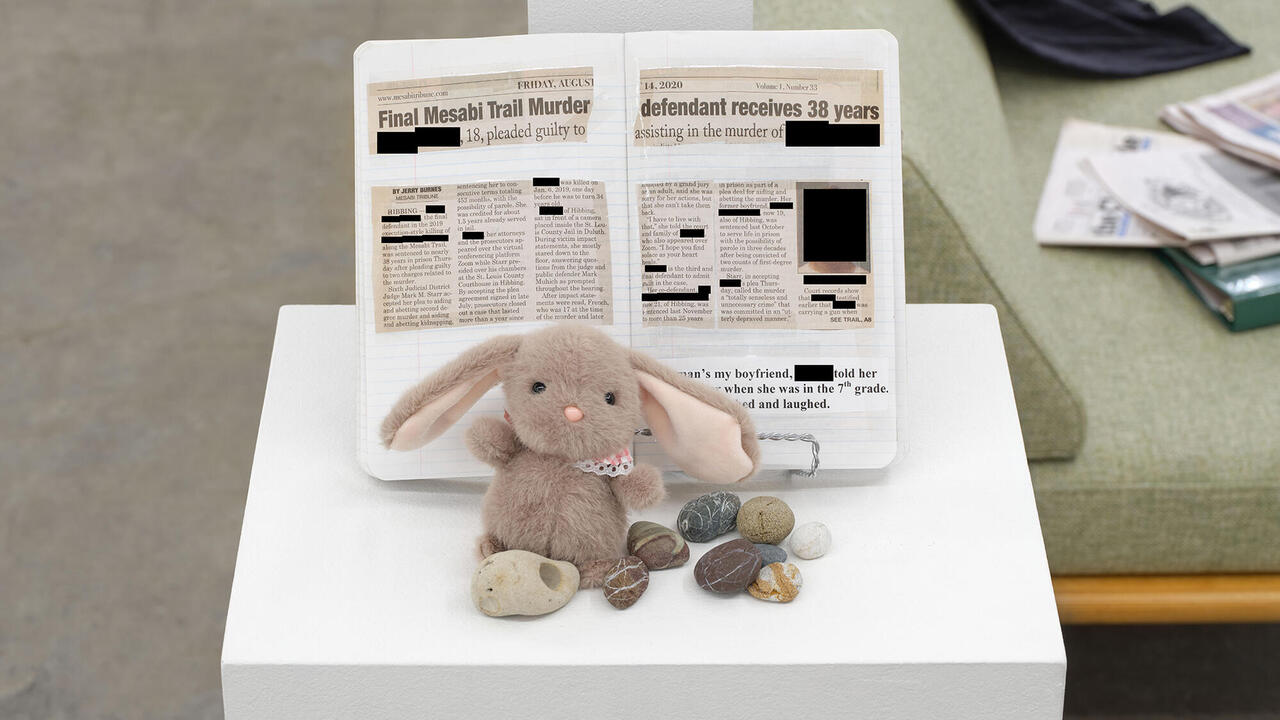Kori Newkirk & Miguel Angel Rios
LA><Art, Los Angeles, USA
LA><Art, Los Angeles, USA

When you begin to fear that you have become a cartoon, your once complicated moods and features reduced to simple one-liner clichés and flattened outlines, and your world increasingly resembles a television spectacle, do you still stand a chance of making a difference in that very world? LA-based Kori Newkirk and Argentina-born Miguel Angel Rios, in their respective works RANK and Crudo (both 2008) exhibited together at LA >< ART, both addressed the individual’s struggle for authority and identity in the face of the spectacular.
Newkirk’s sculptural installation RANK rose, glittery and ominous, over anyone approaching its reflective flight of steps. A cheap construction of mirrored acrylic and Mylar with a cluster of silvery microphones on a podium high above, the sculpture at times performed the ultimate magic trick and seemed actually to disappear in the project space. The whole piece looked like a prepared ‘porta-party’, with some absent orator having deserted the modular Minimalist dais, a curtain fluttering limply nearby and other imagined presiding members all long gone. The piece’s attractiveness derived precisely from the feeling of beguiling entrapment it provoked in viewers transfixed by its aura of vacant theatricality. If there is an allusive connection to a certain upcoming momentous political event in a certain nation – an event the whole world has a stake in – it is perhaps more of a matter of convenient timing on the artist’s part. It’s arguable that in some ways there exists little difference between political candidates, beauty pageant contestants and the winner of a NASCAR tournament – they all are rewarded heroes, and we all have the narcissistic tendency to see ourselves in these players, our contenders, our eventual champions. RANK, with its punning title, is less a flamboyant dig at a cheapened political process, less about invisibility resulting from constant ubiquity, than it is about an illusion of participation on behalf of a timid audience or a weakened populace in that flawed process. Newkirk’s real target is the audience’s implicit passivity, and his installation is a quietly refractive alternative to yelling ‘fire’ in a crowded theatre.
Waging a different kind of theatre, the Mexico City and New York-based Rios’ single-channel video Crudo (2008) offers no clear solution to the audience dilemma introduced by Newkirk, but perhaps instead reveals the inherent failure of easy or outmoded answers. One of the dances performed in Crudo, the malambo, has historically been a male expression of Argentine gaucho machismo and incorporates boleadoras – heavy balls tethered to the ends of long cords that are used to wrangle domestic animals and hunt wild ones. They are the gaucho’s tool of the trade and essential weapon, but Rios’ natty white-suited performer demonstrates none of the violent ball-swinging of his ancestors; instead he has replaced the traditional leather sacks of stones with raw slabs of meat. What may be construed as an activism of identity along the lines of the Afro-Cuban artist Maria Magdalena Campos-Pons quickly turns grisly as snarling guard dogs rush into frame, demanding their immediate due and snapping at the dancing man. It is critical to note that Rios has transformed this powerful, percussive dance into something that is essentially a desperate, even masochistic, offering. The dancer is set up to lose and enters the arena prepared not to be victorious but to endure and taunt and snarl. However, the valiantly pathetic gesture is disrupted by the video’s editing, as new dogs and meat are inserted into and removed from the scene. This introduction of artificiality into what is at first a very poetic sort of singular action, brings the piece closer to resembling a music video (the performer’s boots thunder gloriously). With the dancer offering a raw steak to the dogs in the video’s climax, the entire piece becomes a pessimistic allegory concerning external pressures to ‘be authentic’.
Ultimately both Newkirk and Rios slyly set the stage for theatrical projections of power and helplessness. Their articulation of the problems of vulnerability and apathy in the face of authority may be unresolved, oblique and inconclusive, but Newkirk’s reflective surfaces suggest that one possible (and simple) answer is right there in plain sight.






















